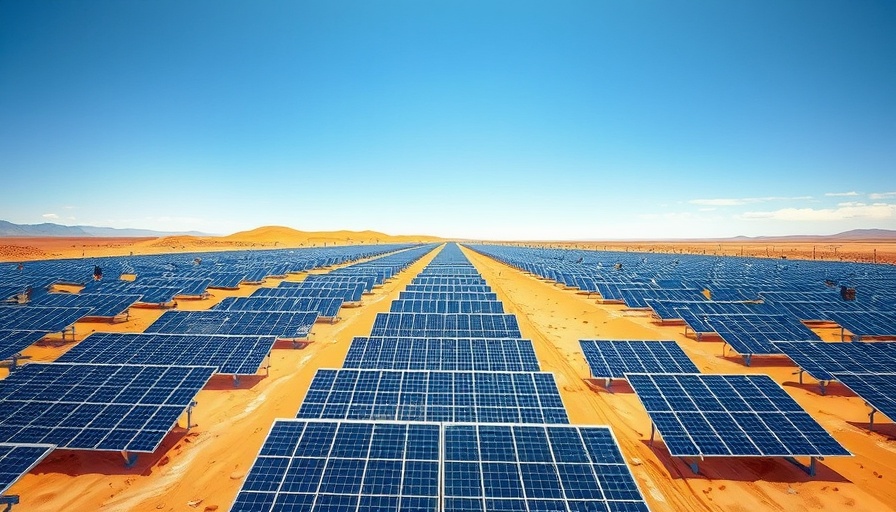
Trump Administration's Cancellation of a Game-Changing Solar Project
The recently announced termination of the Esmeralda 7 Solar Project in Nevada by the Trump administration has left many environmental advocates and homeowners reeling. This massive solar project, which would have been one of the largest in the world, was anticipated to provide enough energy to power approximately 2 million homes. Situated on a sprawling 118,000 acres in Esmeralda County, the site would have produced up to 6.2 gigawatts of energy, significantly contributing to Nevada's renewable energy landscape.
Why This Project Mattered
As the country shifts towards renewable energy, projects like Esmeralda 7 represent crucial advances in sustainable living. Governor Joe Lombardo highlighted its potential benefits, arguing that successful implementation could enhance Nevada's energy capacity, especially for industries such as mining and data centers. With growing energy demands, the cancellation may inhibit the state's ability to meet future needs.
The Impact on Renewable Energy Development
This cancellation comes amidst increasing scrutiny of renewable energy initiatives under the current administration. The Bureau of Land Management (BLM) has imposed additional review requirements that have caused delays and raised concerns among solar project developers. Critics argue that this trend is more about obstructing than overseeing clean energy growth. Heightened restrictions have left many potential projects in limbo, impacting not only large-scale facilities like Esmeralda 7 but also local solar efforts across the country.
What Comes Next?
Interestingly, while the Esmeralda 7 project has been shelved, another solar project in Nevada, Dodge Flat II, is still moving forward, albeit with caution. This situation suggests a potential path for developers to re-approach the BLM with individual solar proposals rather than massive combined efforts, a method that might streamline environmental reviews.
The Bigger Picture
Understanding the implications of such cancellations is vital for homeowners and energy users alike. With renewable energy historically recognized for its benefits such as lower costs and reduced carbon footprints, navigating the current political climate is essential. Homeowners need to advocate for sustainable options, ensuring that energy concerns remain at the forefront of national policy discussions.
In summary, while the cancellation of the Esmeralda 7 Solar Project represents a significant setback, it also opens the door for renewed discussions about the future of renewable energy development in America. Homeowners and citizens must remain engaged, not only to support clean energy initiatives but to safeguard our collective energy future.
 Add Row
Add Row  Add
Add 




Write A Comment